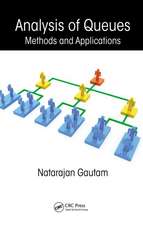Complexity in New Product Development: Mastering the Dynamics of Engineering Projects
Autor Jürgen Mihmen Limba Engleză Paperback – 29 apr 2003
Preț: 384.48 lei
Nou
Puncte Express: 577
Preț estimativ în valută:
73.57€ • 78.67$ • 61.34£
73.57€ • 78.67$ • 61.34£
Carte tipărită la comandă
Livrare economică 17 aprilie-01 mai
Preluare comenzi: 021 569.72.76
Specificații
ISBN-13: 9783824477012
ISBN-10: 3824477017
Pagini: 276
Ilustrații: XXIV, 249 p. 2 illus.
Dimensiuni: 148 x 210 x 14 mm
Greutate: 0.33 kg
Ediția:Softcover reprint of the original 1st ed. 2003
Editura: Deutscher Universitätsverlag
Colecția Deutscher Universitätsverlag
Locul publicării:Wiesbaden, Germany
ISBN-10: 3824477017
Pagini: 276
Ilustrații: XXIV, 249 p. 2 illus.
Dimensiuni: 148 x 210 x 14 mm
Greutate: 0.33 kg
Ediția:Softcover reprint of the original 1st ed. 2003
Editura: Deutscher Universitätsverlag
Colecția Deutscher Universitätsverlag
Locul publicării:Wiesbaden, Germany
Public țintă
ResearchCuprins
1 Introduction.- 2 Literature Review.- 2.1 Analytic models of design iteration.- 2.2 Models based on complexity theory.- 2.3 Models from the empirical or descriptive literature.- 2.4 Models based on the simulation of agent populations.- 2.5 Summary.- 3 Model Description.- 3.1 Structure of the NPD process.- 3.2 Component performance and interdependence.- 3.3 Role of time.- 3.4 Decision making and coordination.- 3.5 Model discussion.- 4 Analytic Results.- 4.1 Closed form analysis for the base case.- 4.2 Numerical example.- 4.3 Implications for the base case.- 5 Simulation Results.- 5.1 Definition of simulation technicalities.- 5.2 Simulation results.- 6 Discussion and Conclusion.- A Properties of the Error Function.- B Simulation Data.- B.1 Data for the base series of simulations (25,000 time units).- B.2 Data for the 10,000 time units verification run.- B.3 Data for the 40,000 time units verification run.- C Program Listing.- C.1 Base case.- C.2 Adaptations for instantaneous broadcast.- C.3 Adaptations for the simulation of cooperation.- C.4 Adaptations for the error function case.- C.5 Adaptations for the depleted case.
Notă biografică
Dr. Jürgen Mihm promovierte bei Prof. Dr. Arnd Huchzermeier am Lehrstuhl für Produktionsmanagement der Wissenschaftlichen Hochschule für Unternehmensführung (WHU) in Vallendar. Er ist als Unternehmensberater bei McKinsey & Co., Inc. tätig.
Textul de pe ultima copertă
In organizational theory the coordination of many interdependent actors in complex product development projects is recognized as a key activity. With increasing project compexity this coordination becomes more and more difficult, and it is not yet known whether this effect can be controlled by frequent and intense communication among project members.
Jürgen Mihm analyzes which factors create complexity in engineering projects and how the negative effects of complexity can be mitigated. He builds a mathematical model of a complex distributed design project demonstrating how complexity inevitably arises from the interaction of simple components. He characterizes the dynamic behavior of the system analytically and with the aid of simulations, and he derives classes of managerial actions to improve performance dynamics.
Jürgen Mihm analyzes which factors create complexity in engineering projects and how the negative effects of complexity can be mitigated. He builds a mathematical model of a complex distributed design project demonstrating how complexity inevitably arises from the interaction of simple components. He characterizes the dynamic behavior of the system analytically and with the aid of simulations, and he derives classes of managerial actions to improve performance dynamics.












